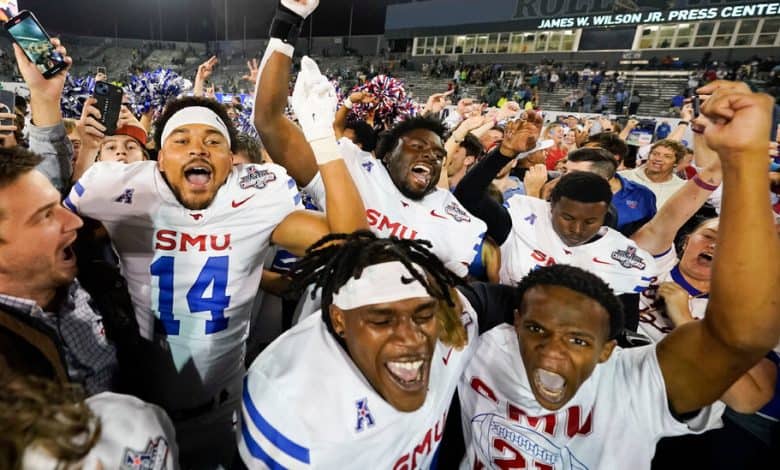How S.M.U., Once the Rogue of College Sports, Got Back to the Big Time

It wasn’t just a gold Pontiac Trans Am with a painted bird on the hood. It was the car that Texas A&M gave to Eric Dickerson in 1979, when he was a top high school running back prospect, in the hope that he would become an Aggie. Instead, he drove from his hometown, Sealy, Texas, to Dallas and Southern Methodist University.
At the time, Mr. Dickerson’s cars (S.M.U. gave him one, too) were a symbol of the wretched excess of big-time college sports. It was a time when boosters in the Southwest Conference doled out “$100 handshakes” and the S.M.U. faithful winked as they talked about how they had the best football team money could buy.
The S.M.U. Mustangs went 34-11-1 over Mr. Dickerson’s four years — the team’s vaunted Pony Express era. It gave the oilmen and real estate developers and business titans across Texas who funneled cash to their alma mater bragging rights at the Petroleum Club of Houston and country clubs in Dallas.

Eric Dickerson, a future Hall of Famer, running the ball for the Mustangs in 1982, when there were strict rules against pay-for-play in college sports.Credit…Ronald C. Modra/Sports Illustrated, via Getty Images
And it drove the National Collegiate Athletic Association, which governs college sports, nuts. The organization had rules to stop those kinds of pay-for-play shenanigans and investigators to chase down overeager boosters, who mostly eluded their grasp. Mr. Dickerson remembers that one N.C.A.A. investigator visited his home so frequently, the guy would sit at his kitchen table and eat dinner with his family.
The N.C.A.A. eventually caught up to S.M.U. (Mr. Dickerson was long gone by then, well into a Hall of Fame career in the National Football League.) In 1987, the organization handed the football team the so-called death penalty, the severest punishment it has ever imposed on a Division I school for rules violations. The program was shut down for two seasons, and the university’s reputation was tarnished.
